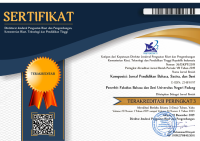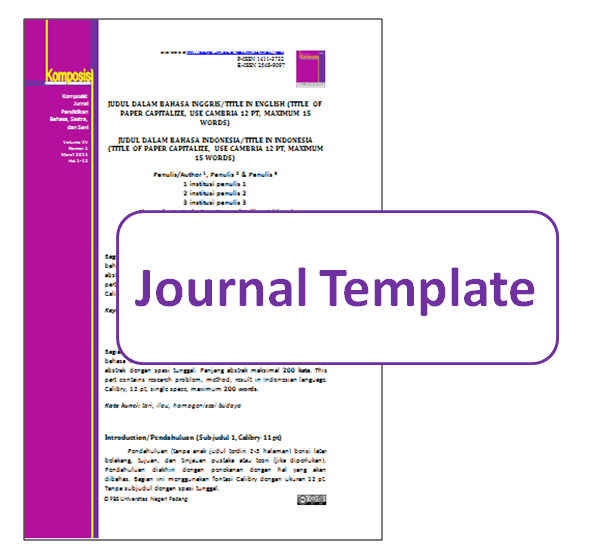Pemahaman Aspek Estetik dan Eferen Wacana Kopi serta Dampaknya terhadap Prosedur Eksplorasi Calon Guru Bahasa Indonesia di Universitas Jember
 ),
), (1) Faculty of Teacher Training and Educaton, Universitas Jember
 Corresponding Author
Corresponding Author
Copyright (c) 2020 Komposisi: Jurnal Pendidikan Bahasa, Sastra, dan Seni
DOI : https://doi.org/10.24036/komposisi.v21i2.106967
Full Text:
 Language : id
Language : id
Abstract
This study aims to describe the mastery of aesthetic and efferent aspects in understanding coffee discourse and its impact on the ability of exploratory procedures for prospective Indonesian language teacher students. The study was applied to 14 students who practice teaching or KK-PLP II at SMK Negeri 2 and SMK 4 Jember. The research method is applied qualitatively and quantitatively. The results of qualitative analysis show mastery of aesthetic aspects consisting of culture and experience of research subjects on planting to serving coffee and efferent aspects about factual, informational, and conceptual knowledge about planting to serving coffee. The results of quantitative analysis were obtained by 1) normality test data on the ability of aesthetic aspects, efferent, and the ability of exploratory procedures; (2) multiple linear regression test; (3) the significance of the regression coefficient test to show the significant impact of understanding aesthetic and efferent aspects on the ability of exploratory procedures. From the multiple linear regression test, it is known that the understanding of the aesthetic aspect (X1) is 0.001 or ,00.05 and the understanding of the efferent aspect is 0.012 or ≤0.05. Thus, understanding the aesthetic and efferent aspects significantly impacts the ability of exploratory procedures in the learning process.
Keywords
References
Akbar. (2013). Menjadi Guru Profesional Peningkatan Mutu Guru. Jakarta: Erlangga.
Bühler, K. (1934). Sprachteorie: Die Darstellungfunktion der Sprache. Stuttgart: Gustav Fischer.
Bühler, K. (2011). Theory of Language. Amsterdam/ Philadelphia: John Benjamins Publishing Company.
Bohlke D. & Rogers , B. (2011). Listening Power 2 Student Book and Classroom Audio CDs. USA: Pearson Longman.
Duranti, A. (1997). Linguistic Anthropology. Cambridge University Press.
Forouzani, M. (2017). Aesthetic vs. efferent reading in reading comprehension courses in the. The Asian Journal of Applied Linguistics 4 (2), 211-227.
Golshan, M., & Ranjbar, T. (2017). The Impact of Culture in Teaching and Learning of English as a Foreign Language. Journal of Applied Linguistics and Language Research 4 (8), 60-67.
Kovács, G. (2017). Culture in Language Teaching. PHILOLOGICA 9 (3), 73-86.
Kramsch, C. (1993). Context and Culture in Language Teaching. Oxford: Oxford
University Press.
Many, J., & Wiseman, D. L. (1992). “The effect of teaching approach on third-grade students' response to literature”. Journal of Reading Behavior, 24 (4)265-287.
McKay, S.L. (2000). Teaching English as an international language: implications for cultural materials in the classroom. TESOL Journal 9(4): 7–11.
Mulyasa. (2015). Pengembangan dan Implmentasi Kurikulum 2013. PT Remaja Rosdakarya. Bandung.
Rosenblatt, L.M. (1994). The Reader, The Text, The Poem: The Transactional Theory of Literary Work. USA: Sourthern Illionis University
 Article Metrics
Article Metrics
 Abstract Views : 350 times
Abstract Views : 350 times
 PDF Downloaded : 264 times
PDF Downloaded : 264 times
Refbacks
- There are currently no refbacks.
Copyright (c) 2020 Komposisi: Jurnal Pendidikan Bahasa, Sastra, dan Seni

This work is licensed under a Creative Commons Attribution-NonCommercial 4.0 International License.












